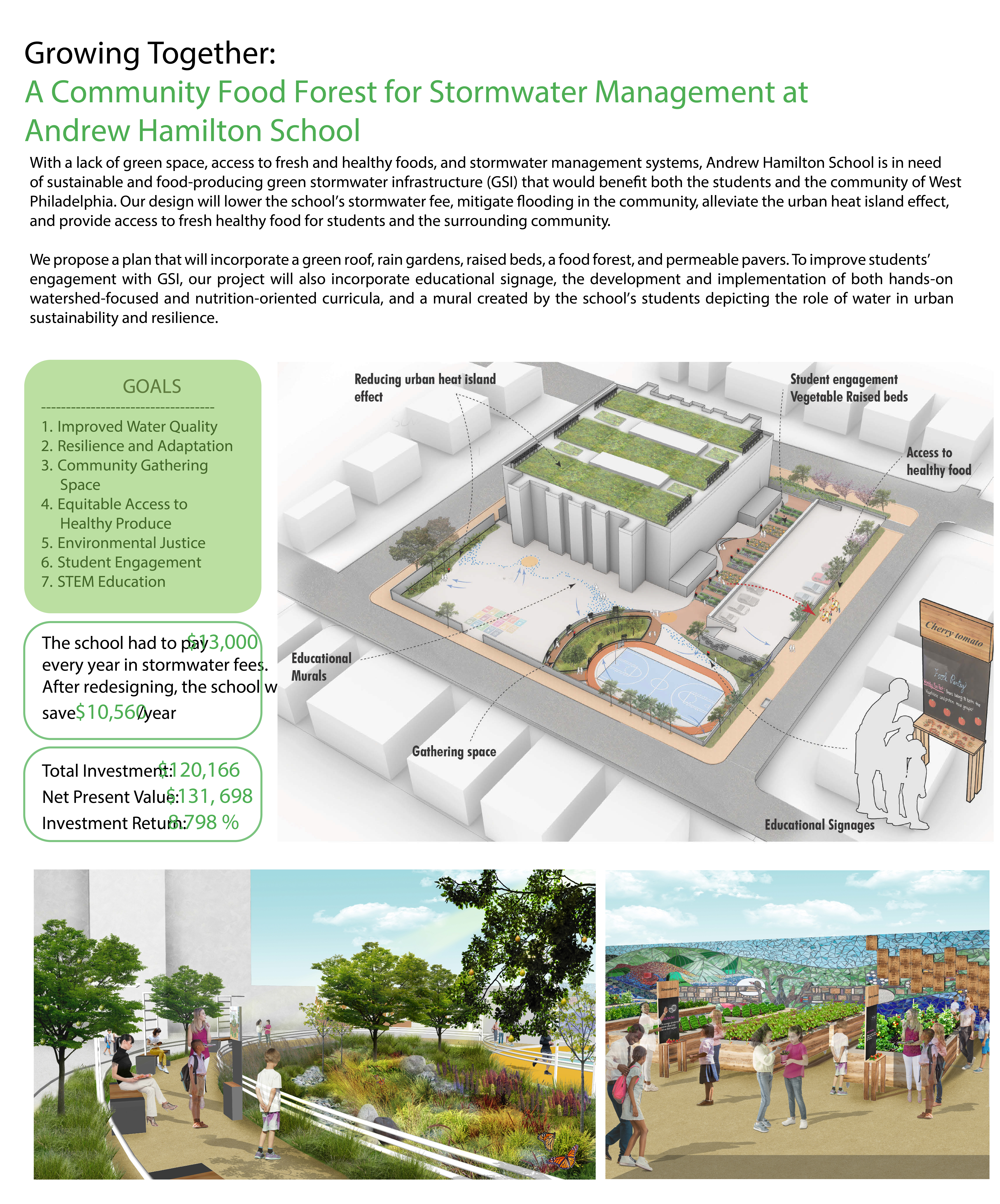
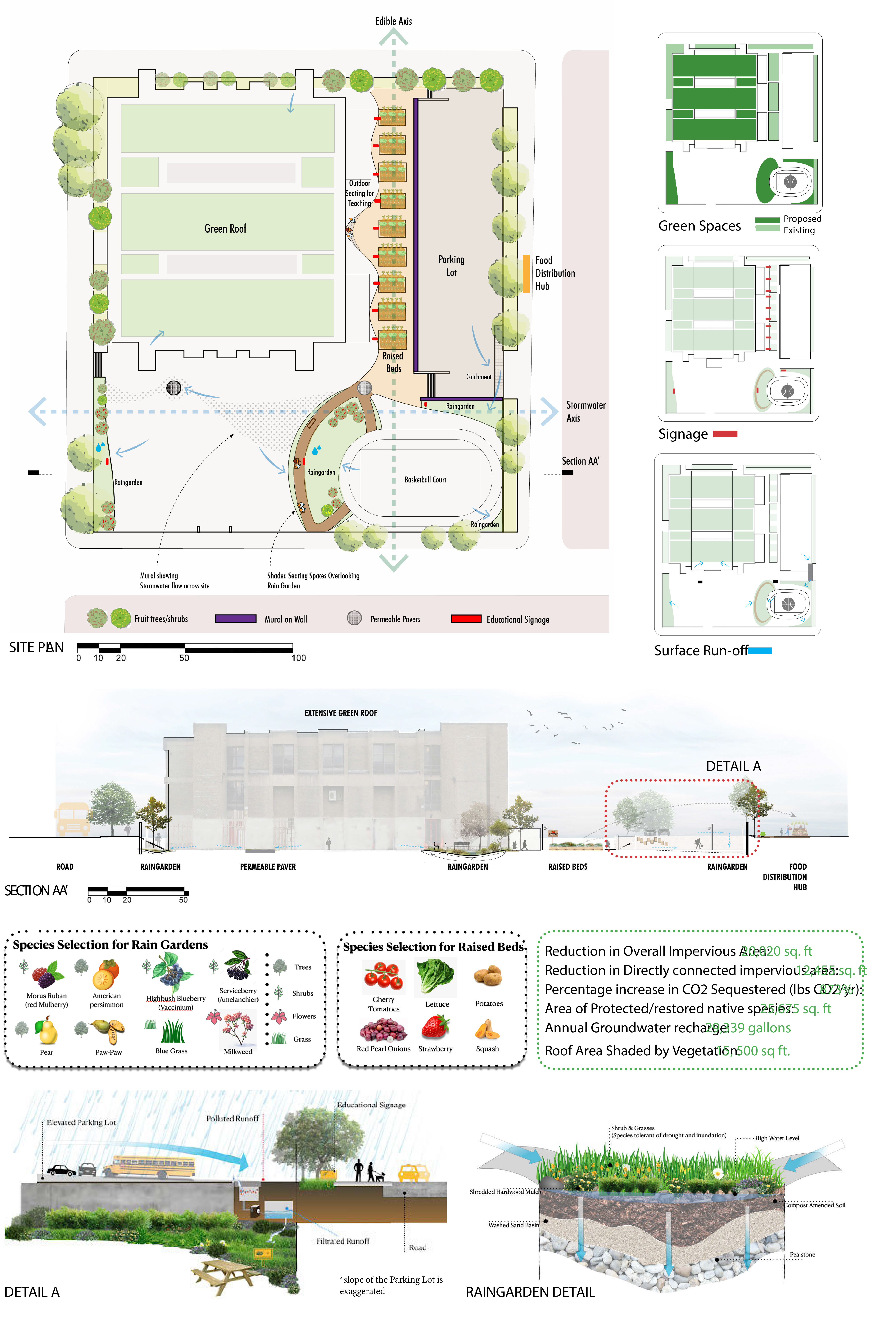
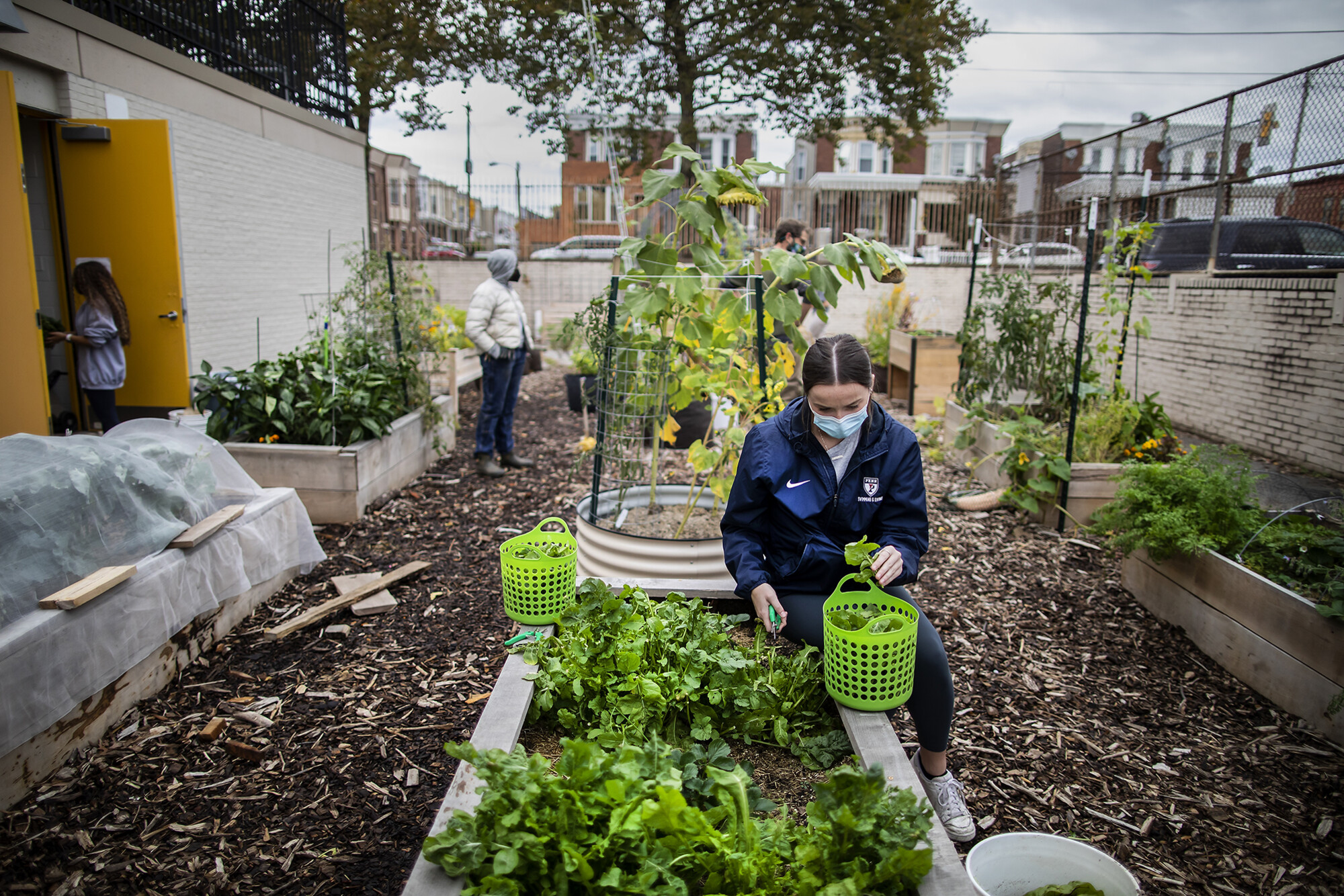
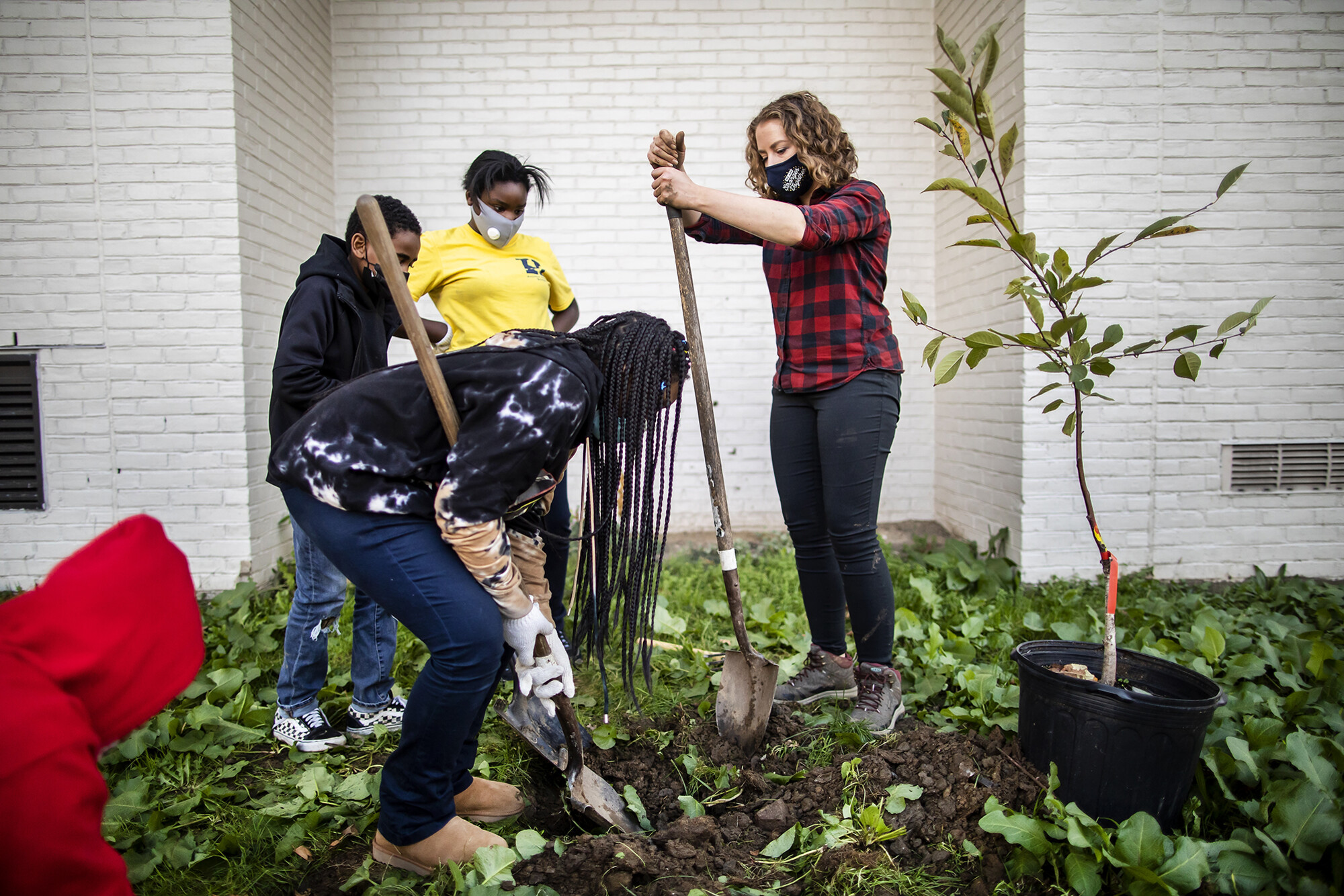
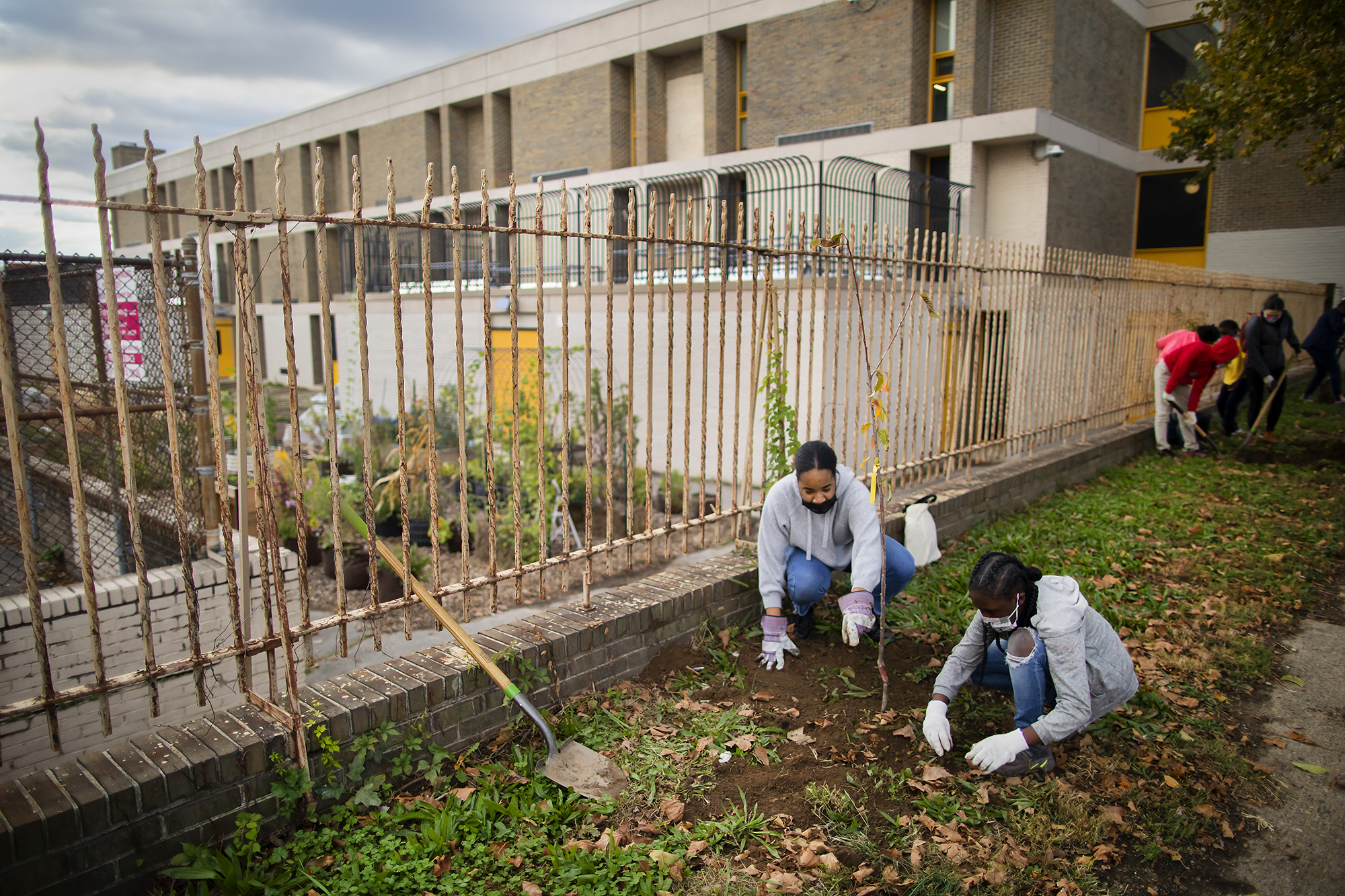
Growing Together
The Story of How our Winning design proposal is Making a Real Difference to Andrew Hamilton School
Project Statement
Andrew Hamilton Elementary School in West Philadelphia lacks green space, healthy food access, and stormwater management, underscoring the need for sustainable, food-producing green stormwater infrastructure (GSI) to support students and the community. Our design will reduce the school’s stormwater fees, mitigate local flooding, alleviate urban heat, and improve access to fresh food. Key features include a green roof, rain gardens, raised beds, a food forest, and permeable pavers. To engage students, we’ll add educational signage, watershed and nutrition-focused curricula, and a mural on urban water resilience. Partnering with school leadership and organizations like the Philadelphia Water Department, the Netter Center, and the Philadelphia Orchard Project, we aim to establish AHS as a sustainable community hub.
Project Goals
This proposal aims to benefit the environment, students, and the surrounding community through seven goals:
1. Improve water quality in Cobbs Creek and the Delaware River by reducing runoff.
2. Increase resilience to severe weather by reducing impermeable surfaces and adding rainwater capture.
3. Create a peaceful garden space to enhance mental well-being for students and residents.
4. Provide access to fresh produce, promoting healthy eating and connection to food sources.
5. Address environmental injustices by mitigating the urban heat island effect and enhancing green space access.
6. Engage students by incorporating their ideas into the design process.
7. Develop GSI-oriented curricula to strengthen STEM education and environmental stewardship.
Community Engagement and Education
Community engagement was central to this proposal. From the start, the school’s principal and faculty contributed to site selection and design, enabling collaboration with the local school district, which agreed to incorporate our stormwater design in its parking lot repaving project.
AHS students helped choose plants for the green infrastructure via class polls, with favorites including apples, tomatoes, and herbs. Lessons expanded to topics like food deserts and environmental justice.
The Netter Center and Philadelphia Orchard Project supported student engagement, GSI planning, and community connections. The Netter Center will hire staff for garden upkeep and develop educational content, while the Philadelphia Orchard Project will assist with the food forest. Students for Environmental Equity (SEE) engaged classrooms on environmental justice, native plants, and activism, empowering students to impact their community.
Design Solutions
To manage runoff, our design includes pervious pavers and subsurface storage around playground drains, ensuring functionality without disrupting student line-up areas. The school district’s upcoming parking lot resurfacing will be regraded to channel runoff into a rain garden.
The project includes 1,650 sq ft of rain gardens and an 11,140 sq ft green roof. The area between tree pits will be regraded to enhance stormwater absorption and support native plant growth. A food forest with fruit trees, vegetables, and herbs will encircle the school, with 36 raised beds for crops on the east side.
Community engagement features include inviting green spaces with benches, picnic tables, educational signage, and a mosaic mural. Additionally, UN Sustainable Development Goals will be painted in the lineup area, blending art and sustainability learning.